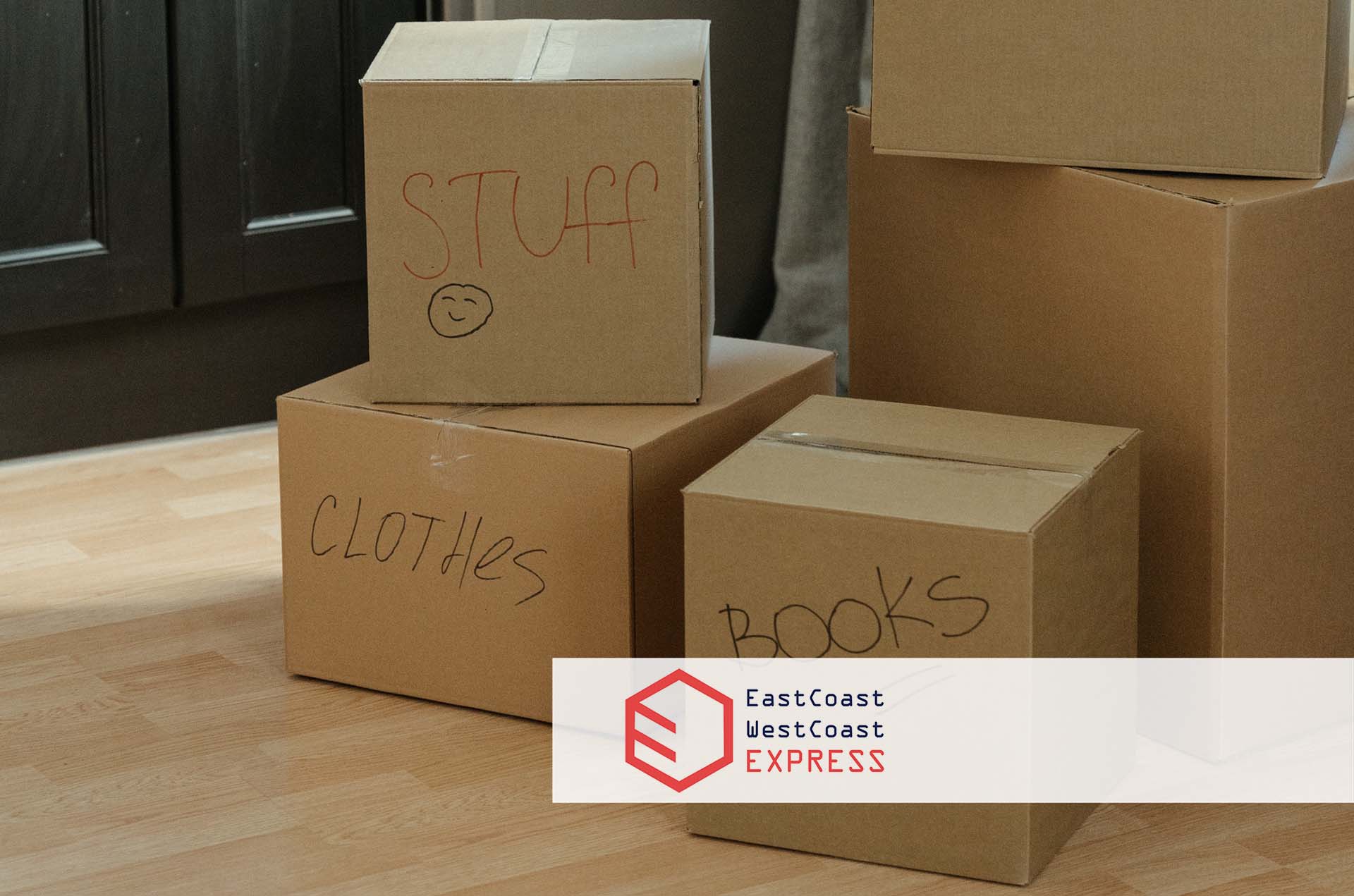
When thinking about packing, one of the first things that come to your mind will be boxing up the wardrobe. But do you know how to do it right? Learning how to pack clothes for moving is essential if you want T-shirts, dresses, pants, jeans, and skirts to preserve their current condition. If you want to keep wearing your favorite pieces in the new home, all you have to do is use our tips. Let’s go!
Before You Start Packing Clothes for Moving, Go on a Purging Mission
When you begin to plan a move to another city, decluttering will become one of the most important pre-boxing up tasks, no matter if you decide to get cross-country moving services or not. Deciding what to keep and what not to pack is necessary when it comes to all items on the household inventory list, including clothing. Be honest – how much of your wardrobe do you actually wear? If the answer is not too much, know that you’re not alone. Some studies show that the average American never or rarely wears more than 50% of their attire!
What should you not pack when moving? Think about garments you haven’t worn for years, items that don’t fit anymore, outdated, torn, and scattered attire. They shouldn’t find a place on the packing list (sentimental pieces excluded). Set them aside and decide what to do with them. Those in good condition can be gifted, donated, or sold, while others must be thrown away. Ensure to check charities such as Red Cross or organizations like Dress for Success, where you can donate unwanted pieces. Remember – getting rid of unnecessary stuff will help you move efficiently. A smaller amount of clothing can reduce the time and money spent on relocation.
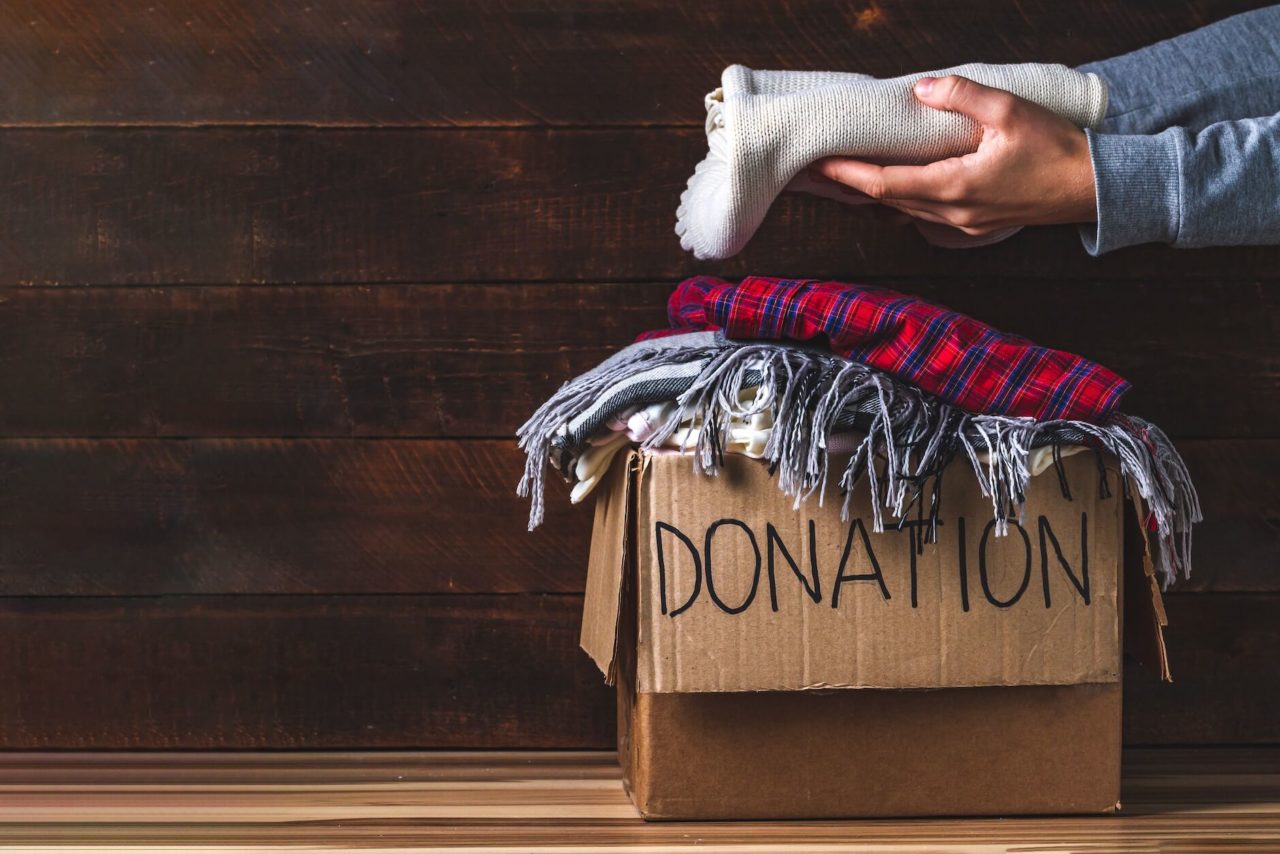 Attire you don’t use anymore can mean a lot for those in need
Attire you don’t use anymore can mean a lot for those in need
Make Sure Your Clothing Is Prepared Correctly
When estimating how long before moving you should start packing, add the time necessary for the preparation process. A couple of sessions of washing, drying, and ironing are in order when it’s time to move. Before the boxing-up starts, make sure that each piece is clean. It’s one of the crucial things to do before moving if you don’t want other belongings to pick up dirt and bad odor. However, you also must be sure that they are entirely dry; otherwise, problems with mold can occur, and the rest of your stuff can get damaged.
Before Determining the Best Way to Pack Clothes for a Move, You Need to Sort Them
Sorting the wardrobe is crucial if you want to stay organized. Firstly, if you’re relocating with kids and a spouse, ensure that clothing from different family members doesn’t get mixed up. Next, make sure to sort it according to the season it’s meant for. This will help you organize unpacking after the move – boxes that contain off-season clothing don’t have to be unpacked right away. Sorting the wardrobe by type (pants, dresses, shirt, and so on) and material can also be helpful when deciding which packing materials should be gathered.
When getting organized to move, don’t forget to separate a bag with relocation essentials that will help you survive the first few days in the new home. Aside from toiletries, electronics, and snacks, it should also contain a few spare outfits for each family member. While East Coast movers or West Coast movers move the rest of your belongings between states, ensure to keep essentials by your side.
Know What Type of Bags and Boxes You’re Going to Use
If you opt against getting packing services from a chosen long-distance moving company, gathering supplies will be a task that falls on you. Consider getting:
- Cardboard boxes – if you’re looking for cheap relocation supplies, a basic box should do the trick. Buying them is not very expensive, but you can even find free ones. Just look around your home, ask friends, or visit local stores.
- Vacuum or compression bags – those are excellent moving bags for clothes because many pieces can be folded inside of them, and they still won’t occupy a lot of space. Best of all is that they will provide excellent protection and can be used as storage even after the move.
- Suitcases and duffle bags – if you’re already relocating them, there is no reason to waste all that empty space inside.
- Plastic containers – if you have some large ones around the house, consider some creative storage ideas for small wardrobe pieces.
If you prefer to utilize a regular box, you should have some padding material prepared. The best and the cheapest would be packing paper. Place it on each side of the box before putting the attire in it, and add some more on top before closing. Make sure that the package is properly closed on each side and avoid making one of the most common relocation mistakes when boxing up – overfilling.
Get Wardrobe Boxes for Moving the Most Precious Items
Do you own a power suit necessary for getting a job in a new city? An expensive cocktail dress in which you look like a goddess? When it comes to more delicate pieces, you can thank whoever created the divine solution called a wardrobe box. All you have to do is move the outfit from one rack to another and close the box. And if some pieces demand a little bit more protection, keep them safe with dry cleaning bags.
If you’re wondering how to pack clothes when moving without folding or rolling, this is the answer. With it, your most valuable attire will remain wrinkle-free throughout the move. Although they are not cheap, they’re worth every cent. Even better, it’s an excellent choice for all hanging garments, as long as you get enough boxes.
Don’t Underestimate the Power of a Trash Bag
Yes, garments can be packed inside a simple trash bag, as long it’s strong enough to hold them. However, reserve it for less important parts of the wardrobe – they’re not exactly the safest solution. Bags can tear more easily than cardboard, and the contents will likely get wrinkled.
However, a trash bag can also provide excellent protection for your hanging wardrobe. Group several hangers with garments, pierce the bottom of the bag and slip the hangers through it. In the end, ensure to tie the top and the bottom of the bag.
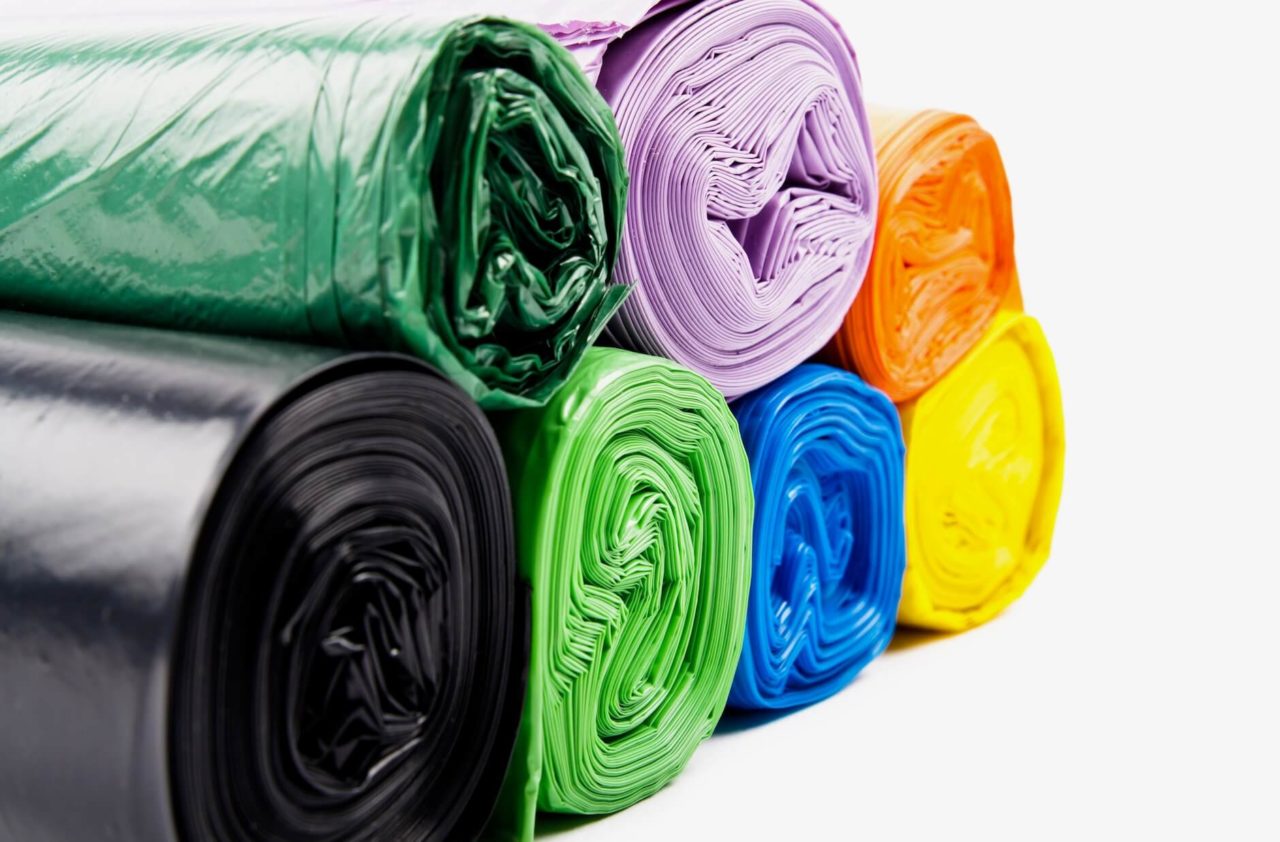 Garbage bags can be used for more than just garbage if you’re creative enough
Garbage bags can be used for more than just garbage if you’re creative enough
Learn Step-by-Step Guides for Folding
So the best solution for hanging garments is to keep them hanging. However, when relocating to a new city, there will be plenty of pieces demanding folding. How should you pack clothes for moving in that case? As keepers of the best relocation hacks, we prepared simple guides on how to pack clothes for a move using different techniques. Choose the most suitable ones.
The Flat Fold Is the Best Choice for Packing Items in Boxes
The flat fold is a technique you’re most likely already familiar with and utilize on a daily basis in your home. However, let’s summarize the whole process:
 The Military Roll Method Will Save You a Lot of Space
The Military Roll Method Will Save You a Lot of Space
How to Pack Clothing Fast? Create Bundles
The bundling technique works best with suitcases. It guarantees more space and less wrinkled garments, as long as you do it right. This is how it should be done:
 How to Pack Clothing Fast? Create Bundles
How to Pack Clothing Fast? Create Bundles
The Military Roll Method Will Save You a Lot of Space
Yes, we know that your relocation to a new state might not be a military move, but that doesn’t mean you can’t resort to some of their techniques. We guarantee – once you start folding like this, you won’t be able to stop. Try the following steps:
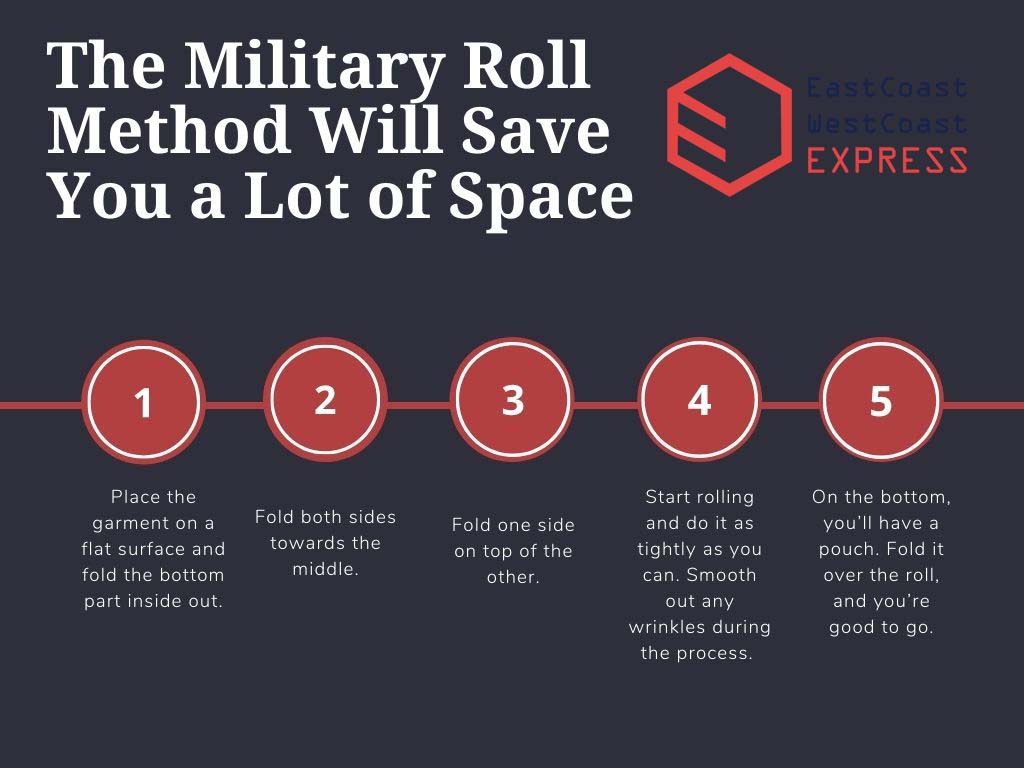 The Military Roll Method Will Save You a Lot of Space
The Military Roll Method Will Save You a Lot of Space
If you need a visual representation of the army roll or clarification on how to do it with different types of wardrobe, ensure to watch the following video:

What’s the Best Way to Pack Clothes When Moving in a Hurry?
If you have a last-minute move, there won’t be much time before the relocation day comes and long-distance movers start loading the truck. Luckily, we have some packing tips for relocating in a hurry that will teach you how to move clothes safely and efficiently.
If you have to speed up the process of relocating to a new home, box up your wardrobe as it is. What does it mean? Well, keep your garments in dressers, closets, and cabinets. If you’re getting long-distance moving services, see if movers are ready to relocate the furniture like that. Ensure that no furniture piece is too heavy to carry. If it is, leave only the lighter stuff, and package heavier garments separately.
The Best Way to Move Clothes and Save Time Is to Use Them for Wrapping and Padding
If you want to kill two birds with one stone, utilize less important attire instead of paper and bubble wrap. Talk about saving on relocation costs! With the proper method, you can even pack fragile items using socks or other garments! However, in this case, plenty of washing and ironing will be in your (close) future.
 Cheapest way of boxing up is using things you already have at home
Cheapest way of boxing up is using things you already have at home
Separate Shoes From the Wardrobe
This should go without saying, but shoes and attire should not mix! Don’t risk damaging the most beloved pieces just because you didn’t want to separate these two. Now that you know everything about boxing up garments, make sure to learn how to pack shoes for relocation. Yes, they do need your care, too, just not the same as the wardrobe.
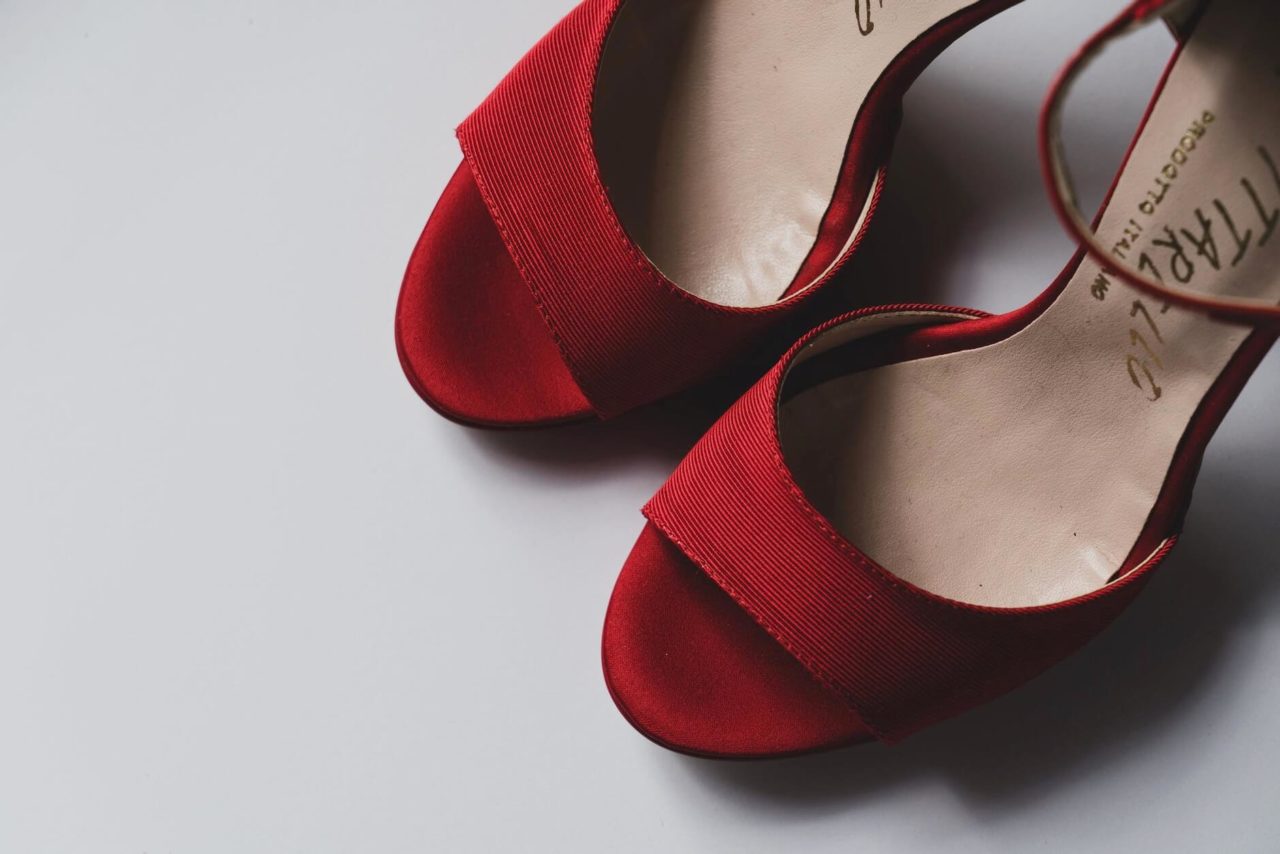 Shoes need protection, too, just a different kind
Shoes need protection, too, just a different kind
Tired Already? Cross-Country Movers Have All the Knowledge on How to Pack Clothes for Moving
As you can see, there’s a lot of work revolving around boxing up the wardrobe. And it’s just a tiny part of all things that should be packed! Wanting to place such a dull task in someone else’s hands is entirely understandable. And who better to pick than those who are trained for it? Focus on more important and exciting relocation tasks, and leave everything concerning the move to experts. You’ll see how much time and energy you’ll save!


